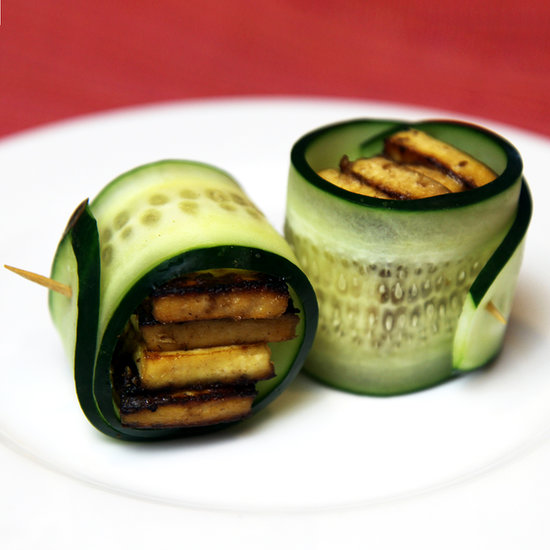Whether you’re a vegetarian or not, everyone can benefit from regularly eating meatless meals. Non-GMO soy products are easy and healthy sources of protein that you can use as an alternative when trying to cut back on meat. They can also be added to recipes like smoothies or desserts to increase the protein. Tofu is probably the most popular soy product, but tempeh shouldn’t be overlooked. Check out this chart below to see how they compare. Tofu Tempeh How it’s made By curdling fresh, hot soy milk with a coagulant By fermenting cooked soybeans with a mold How it’s sold…
Whether you’re a vegetarian or not, everyone can benefit from regularly eating meatless meals. Non-GMO soy products are easy and healthy sources of protein that you can use as an alternative when trying to cut back on meat. They can also be added to recipes like smoothies or desserts to increase the protein.

Tofu is probably the most popular soy product, but tempeh shouldn’t be overlooked. Check out this chart below to see how they compare.
| Tofu | Tempeh | |
|---|---|---|
| How it’s made | By curdling fresh, hot soy milk with a coagulant | By fermenting cooked soybeans with a mold |
| How it’s sold | Five-inch-size blocks, in five varieties: silken (used for creamy dishes), soft (great for soups), firm, and extrafirm (the last three are great for stir fries); packaged in water to help it stay moist | Flat rectangular pieces about eight inches long |
| Appearance | White, smooth, and wet | Brownish in color and dry; can see whole soybeans |
| Consistency | Soft, smooth, and spongy | Firm and chewy |
| Flavor | Has hardly any taste on its own, but when added to recipes, takes on the flavor of whatever you’re making | Has a slight earthy, sweet taste |
| Calories in 1/2 cup | 97 | 160 |
| Protein (g) in 1/2 cup | 10.1 | 15.4 |
| Fiber (g) in 1/2 cup | .5 | 3.5 |
Although a little higher in calories, tempeh is less processed than tofu, and it’s healthier in general because it contains more protein and fiber than tofu. If you’ve never tried tempeh, you can find it at most health food stores (it’s refrigerated). Incorporate this soy product into your recipes by crumbling it up and adding it to soups, salads, casseroles, or pasta sauces. Tempeh adds a chewy consistency to your dishes along with extra protein and fiber.
Either way, both offer a healthy dose of protein for vegetarians and meat-eaters alike. Try this colorful Mexican quinoa salad featuring tempeh. If you’re not quite a fan of the tempeh texture and you prefer tofu instead, try this tofu scramble with kale and sweet potatoes.
POPSUGAR, the #1 independent media and technology company for women. Where more than 75 million women go for original, inspirational content that feeds their passions and interests.
Source: Which is Healthier: Tofu or Tempeh? : PopSugar





